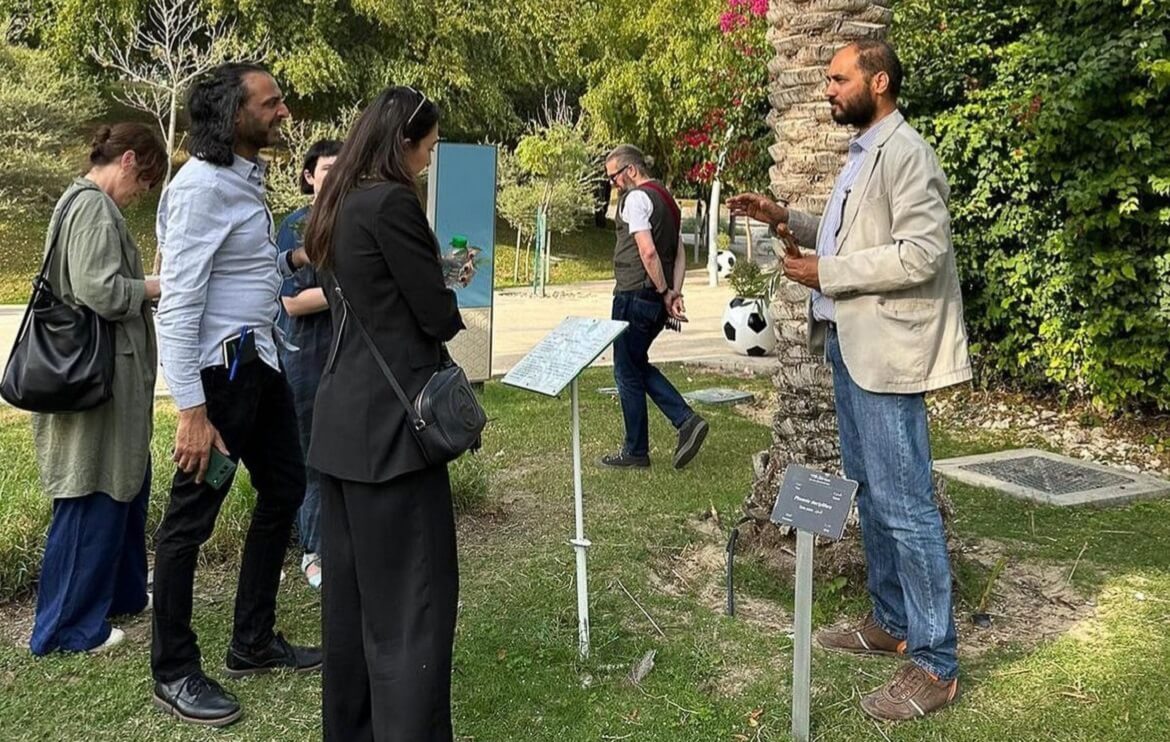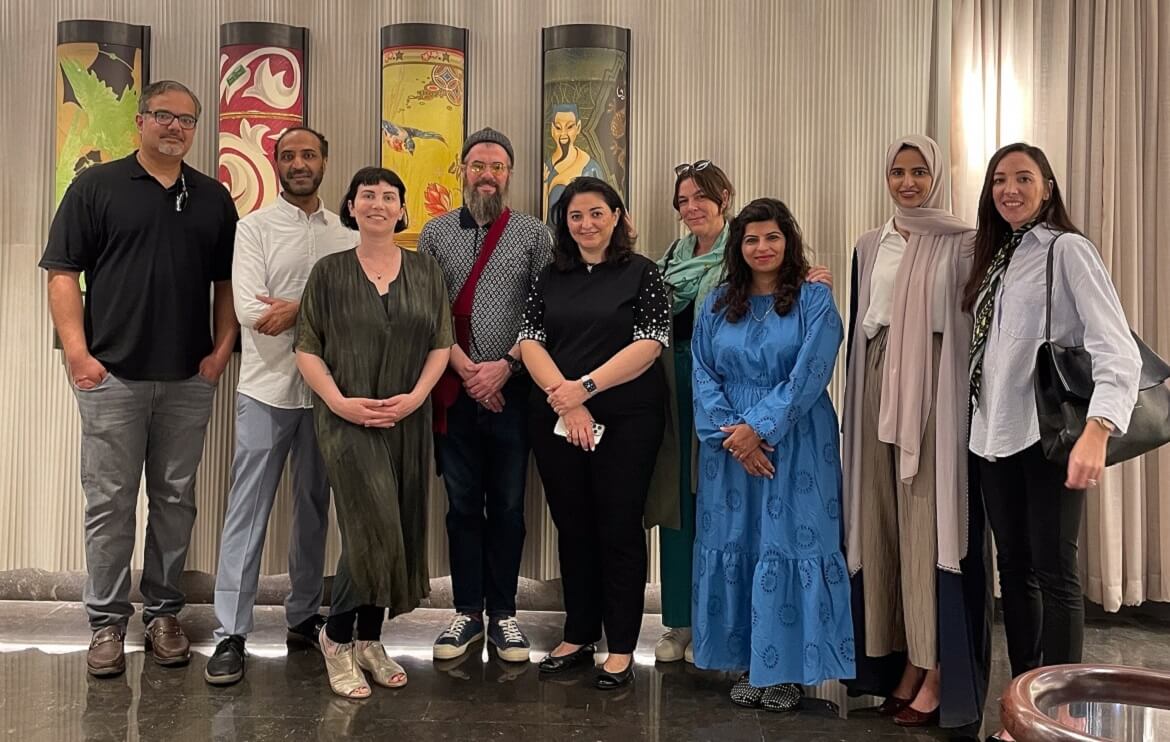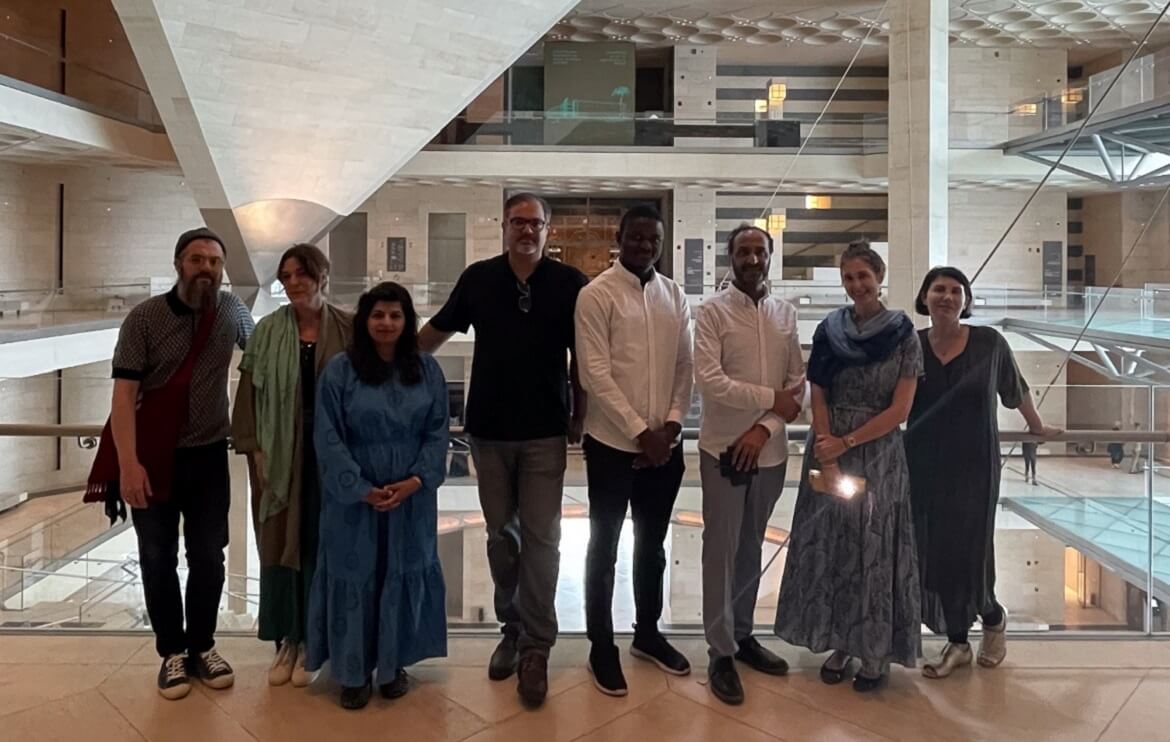World Geostrategic Insights interview with Laila Abdul-Hadi Jadallahhow on how contemporary art can be used as a tool of diplomatic soft power to foster mutual understanding among people and countries.

Laila Abdul-Hadi Jadallah is a seasoned director, arts researcher and curator based in Washington, D.C., working at the intersection between contemporary art and cultural diplomacy. She has more than fifteen years of experience in international, national and regional museum and gallery exhibitions, public art, interdisciplinary programming and non-profit leadership. She is currently serving as the first-ever Manager of Arts and Culture for the City of Frederick. Previously, she was the Director of Programs at the Qatar American Institute for Culture, overseeing exhibitions, interdisciplinary programs, and partnerships. From 2018 to 2022, she served as the inaugural Managing Director of Washington Studio School.
Q1 – You are a Palestinian-American born in Geneva, Switzerland, raised in Virginia, USA, and have worked in the Washington area, Paris, the Middle East and North Africa. How has your background has influenced your work?
A1 – Being Palestinian-American has greatly informed my work and decision to pursue a career in the arts, cultural diplomacy, and now public service. Imagery and framing are two hugely important factors in how citizens view themselves and others, and the arts are a powerful way to help inform these views.
I think it’s hugely important for Americans of different heritages, like me, to be in spaces where we can use our positions to provide a more holistic picture of an increasingly multipolar and interconnected world.
One exhibition, image, or public art installation can inform someone’s knowledge of a place, group of people, or larger community. I say this because I have experienced that myself all along the way as a viewer of art from all over the world and through working with incredible artists who serve as witnesses and respond to what is happening in the world today. Understanding this has guided me throughout my career and the type of work and projects I have taken on.
Q2 – Art and culture are the glue that binds civilizations together, and cultural initiatives can make a tremendous contribution to the promotion of goodwill, trust, and cooperation among nations. You have been actively working at the intersection of contemporary art and cultural diplomacy. In your experience, how can art be used as a tool of diplomatic soft power?
A2 – I love that framing. Scholarship on diplomacy has provided so many examples of how, when done well, soft power is a crucial element of nation branding. Art and culture are approachable forms of soft power because even at the citizen-to-citizen level, they can foster mutual understanding, create a relatively neutral ground for dialogue, and create space for addressing sometimes complex or sensitive issues.
Reflecting on the failures of U.S. foreign policy in Afghanistan, former U.S. Ambassador Zalmay Khalilzad made a profound statement: one can’t transform a society through warfare. This sentiment, while not explicitly about the role of soft power in diplomacy, resonates deeply when considering the potential of art and culture to foster mutual understanding. This is evident not only at the national level but also in the local initiatives of cultural institutes and museums that weave threads of connection between people and offer commentary on contemporary socio-political issues.
Cultural heritage protection as a sector is an excellent example of how art and culture can promote goodwill, trust, and cooperation. We have seen this in Western museums’ role in safeguarding the national treasures of other countries in conflict.
I have enjoyed working at the intersection of contemporary art and cultural diplomacy. Particularly with my work at Qatar American Institute for Culture and the exhibitions, I had the pleasure of curating at the Middle East Institute. I loved seeing artists of different disciplines from Qatar and the U.S. connect personally through programs, exhibitions, and cultural exchange programs. I see it as a form of citizen diplomacy, where one can influence opinion, create threads of connection between people, and promote a country’s values, culture, and history, and this can be duplicated at the national level.





Q3 – There seems to be a growing interest among Arab governments, especially in the Gulf, in using the soft power of Arab arts and culture on the global stage. How do you see the Arab world’s strategy for developing cultural diplomacy? Compared to approaches in other parts of the world, are there any specific characteristics?
A3 – Although numerous Arab states have used culture as a field of power since the 19th century, the Gulf states have arguably exceeded all historical cultural diplomacy investments by other countries in the region over a short period of time. Notably, the United Arab Emirates (UAE) has been ranked 10th in the world for two years in a row in Brand Finance’s Global Soft Power Index. When you consider the length of time the UAE has invested in soft power versus others in the top ten – among them the United States, the United Kingdom, and France – it is quite remarkable. Saudi Arabia, which took about a decade after the UAE and Qatar to invest in cultural diplomacy in the same fashion, is doing so rapidly and has the geographic scale and population potential that neighboring countries cannot match. Additionally, with continued cuts in government investment in soft power efforts in the United Kingdom and others, there is room for continued soft power gain in the region.
The Gulf states have certainly benefited from seeing and learning what successful cultural diplomacy looks like. At the same time, Qatar, the UAE, and now Saudi Arabia have decided at a governmental level to invest multi-billion dollars of their hydrocarbon wealth in the creative economy and cultural diplomacy investments. Each of these countries has identified cultural development as a key pillar of their national visions. For example, in 2018, the UAE launched its Culture Agenda 2031 to strengthen the UAE’s position on the global cultural and creativity map and the creative economy’s contributions to the country’s GDP. Each has, in turn, identified its unique brand of soft power to promote particular nationalist ideologies tied to cultural investments and external foreign policy gains. Qatar and the UAE’s Golden Visa programs also attract creatives and entrepreneurs who could join each country’s soft power diplomacy.
While there is still much to observe and analyze in terms of the long-term economic and diplomatic benefits, the potential is immense. How Saudi Arabia’s investments will crystalize and the competition or opportunities for transnational tourism that will exist in the next decade or so are exciting prospects.
Laila Abdul-Hadi Jadallah – Director, arts researcher and curator.
Featured image source: “Exhibition, More Than Your Eyes Can See”, Contemporary Photographer from the Arab World at the Middle East Institute Arts and Culture Center, Washington, DC







